Our articles are not designed to replace medical advice. If you have an injury we recommend seeing a qualified health professional. To book an appointment with Tom Goom (AKA ‘The Running Physio’) visit our clinic page. We offer both in-person assessments and online consultations.
In part 1 and part 2 we examined causes and solutions for PFPS. In part 3 we’ll look at progressing your rehab with gym-based exercises. As we’ve mentioned previously it’s important to strike a balance with exercise – too little and nothing will change, too much and you may aggravate your pain. The way to achieve this balance is with careful selection of exercise and gradual increase in resistance. This approach also works well for ITB problems too.
When can I start gym exercises?
Start as soon as you feel comfortable to do so. Usually your pain levels should be around 6 or less (if 0 was no pain and 10 the worst possible pain). Your knee shouldn’t be too irritable – by this we mean not too easy to aggravate. If it’s still painful just walking or is easily aggravated by minimal activity it may be too soon to start gym work. Try the basic exercises in the previous sections and consider discussing pain relief with your GP. When things have settled you can reconsider the gym.
Will it damage my knee?
If you’re sensible and work within limits of your pain it’s highly unlikely to damage your knee. In elite sports gentle gym work can start as little as 1-2 weeks after an injury! If you are sensible and keep resistance low then you can start load healing tissues quite early in their recovery process. If you have any concerns about starting a gym programme always consult your GP or health professional.
How to approach your first few gym sessions
When first returning to the gym after an injury your priority is comfort. Don’t be too concerned with how long you are exercising or what resistance you use. Just aim to do an easy, comfortable work out. Take note of what you’ve done (you could use the sample schedule below) and use that to form a baseline. Record time, reps (repetitions – how many you did in one go) sets (how many sets of reps you did e.g. 3 sets of 10 repetitions) and load/resistance. Your baseline is the amount of each exercise you can comfortably do without causing pain. After a few sessions you can gradually increase this. How you go about your first sessions will depend on how bad your pain was. You may be able to be less cautious with a niggle than with a more severe pain.
Sample gym programme for PFPS;
All reps, sets, loads etc are approximate – these will depend on each individual and are just a suggestion. Consult your Physio/ health professional for a personalised programme.
Warm-up 10-15 minutes
Gentle exercises including balance and control work;
Straight leg raises, single leg balance, single knee dip and band walks (detailed in part 2) 10-20 reps of each.
Choose either cardio or strength work rather than doing both on the same day, this stops the cardio from interfering with strength work and vice versa.
Cardio
Bike
Cycling helps to promote production on synovial fluid that lubricates the knee joint, in doing so it helps maintain joint flexibility. Cycling with high resistance (in a difficult gear or up hills) can increase the patellofemoral load (PF Load) therefore start with a low resistance. Gradually increase the time you cycle first, then after a few sessions, increase the resistance. If using toe clips or SPDs avoid pulling up as you raise the pedal (instead push down on the other pedal).
First session suggestion – 2-5 minutes
Stepper
The step machine/ stepper can aggravate PFPS if you do this one keep the steps quite short and shallow and the resistance fairly low. If you can’t do it pain free come back to it at a later date.
First session suggestion – 1-3 minutes
Elliptical cross trainer
The elliptical cross trainer is designed to replicate running, without the impact. It usually has a fairly low load on the patella. Keep the resistance low initially.
First session suggestion – 2-5 minutes
Treadmill
In your first few sessions you may just want to start with brisk walking/ incline walking rather than jogging. If you do jog/run then go at ‘long run pace’ I.e. a comfortable pace you could easily chat at. Take note of the distance and time and use that as your baseline. More info about this on returning to running after injury.
First session suggestion – 3-5 minutes brisk walking.
Strength work
Glutes
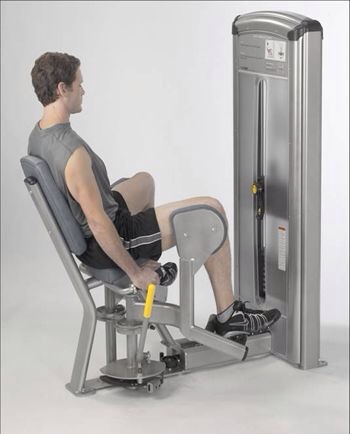
Sidelying abduction, clam or any of the glutes exercise can be used providing they are comfortable. Ideally your would work to fatigue and do 2-3 sets but you might want to start with 10-15 reps with 1 or 2 sets. You can also use machine weights such as seated hip abduction or standing hip abduction (using the cable cross). Use low to moderate weight, starting with 10-15 reps 1 or 2 sets.

You should feel glutes exercises in the side of the buttock area, try and target that when you exercise. If you feel it down your leg, towards the outside of the knee or ITB change position and try again.
Quads
Leg press

Start with using both legs, bending them about 40-50 degrees with a moderate weight. The PF load is low in this range. 10-15 reps 3 sets. Progress to working just your weaker leg (low load first) when comfortable.
Leg extension
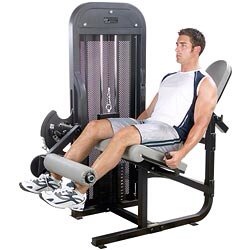
This exercise has possibly the highest PF load and is most likely to aggravate PFPS, despite this it can have a role. Start with both legs, minimal load in pain free range. This might be just moving the knees from 90° flexed to 60° flexed initially then progressing to fully straightening the knee. 10 reps 1 or 2 sets
Hamstring curl

Hamstring curl is usually unlikely to aggravate PFPS. Start with both legs moderate load. 10-15 reps 3 sets. Progress to single leg when comfortable.
Progressing strength work
Strength work and resistance training is a complex area. Deciding reps, sets and load can be complicated. We discuss this in more detail in our piece on resistance training.
For the purposes of this piece I would say the aim is to progress your quads and hamstring strength work by increasing the weight to a point where you can only just manage 10 reps. Then do 3 sets of 10 with a 2-minute rest between. Ideally, you would do this as a single leg activity. It should be challenging but not painful!
For glutes strength use a lower resistance aiming to fatigue the glutes at between 15 and 25 reps. Work to fatigue, 3-5 sets with a 1-2 minute rest between.
Cool down and stretches
The cool down after exercise is a good time to do your stretches. Often it helps PFPS to stretch quads, ITB, hamstrings and calf muscles – these are detailed in part 1. If you’ve been doing cardio it may also be a good time to use the foam roller if it’s not too sore.
How often should I go?
Using the gym as little as twice a week can have strength benefits. In the early stages allow at least one rest day between each gym session to allow your body to recover. Knee rehab groups I’ve organised have been twice weekly and have produced excellent results in 4-6 weeks.
Sample strength programme for 10 gym sessions;
Final thoughts; gym work can be a useful part of a rehab programme. The suggestions above are just an idea of a programme you could use. The most effective and safest way to rehab is under the guidance of a Physio/ health professional so as ever with injuries on RunningPhysio…if in doubt get it checked out!
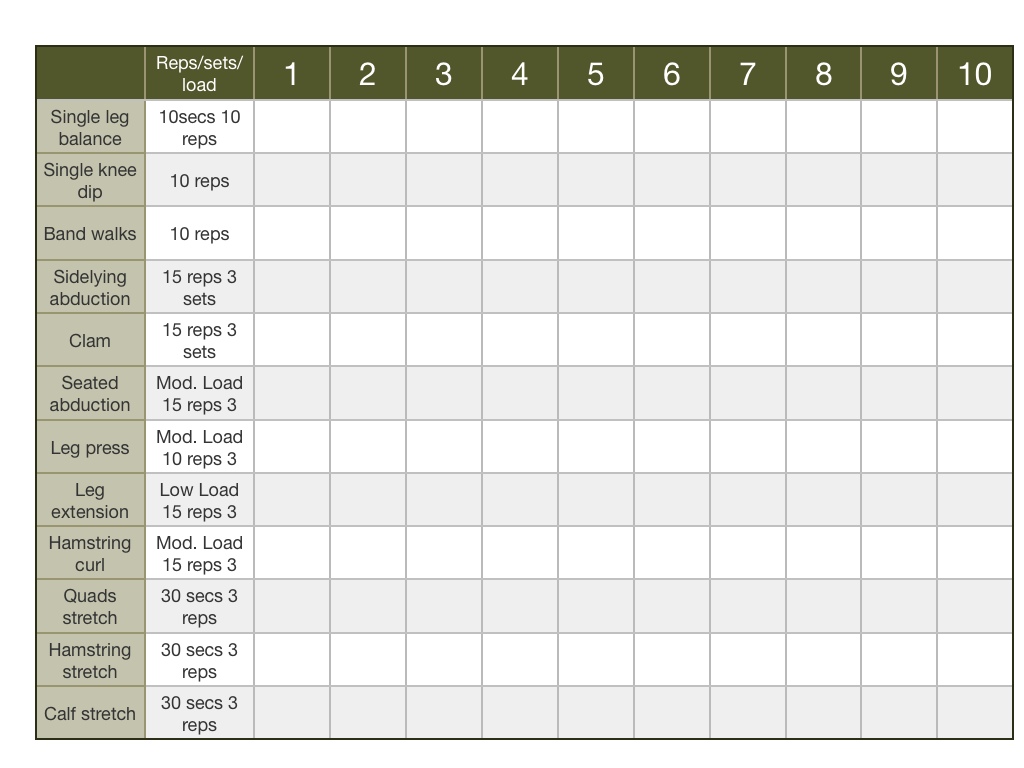
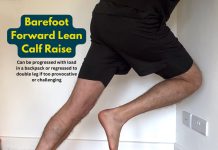

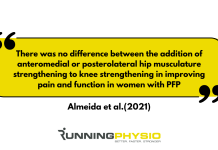







Please let me introduce you my brand new ebook: “Patellofemoral syndrome – A better understanding… for a better healing!”
The purpose of this ebook is to inform and assist people suffering from patellofemoral syndrome, as well as those around them. It provides them with information that is complete, clear, precise and instructive, and with illustrations to enhance understanding of this condition: from the origins of the pathology to its treatment, through the anatomy of the knee, medical examinations, diagnoses, lifestyle, the psychological aspect, prevention and other tips and hints.
The main objective of this ebook is clear: to provide the keys that will enable everyone to take charge of their medical problem, with the help of different health practitioners, and guide you on the road to recovery, eliminate your knee pain, and above all, avoid making the same mistakes I made!
This ebook sets out to be practical and to allow you to make the most of what is currently available. It should be used as a tool to help cure yourself at home, with the help of daily exercises.
Fred
Patellofemoral syndrome – A better understanding… for a better healing!
Greetings! I’ve been following your web site for a long time now and finally got the bravery to go ahead and give you a shout out from Dallas Tx! Just wanted to mention keep up the great work!
Hi, thank you. Your article has help me a lot with my pfps injury. Wanted to ask if working on my calf would re-injure me? Example doing calf raises. Thank you for your time.
Comments are closed.